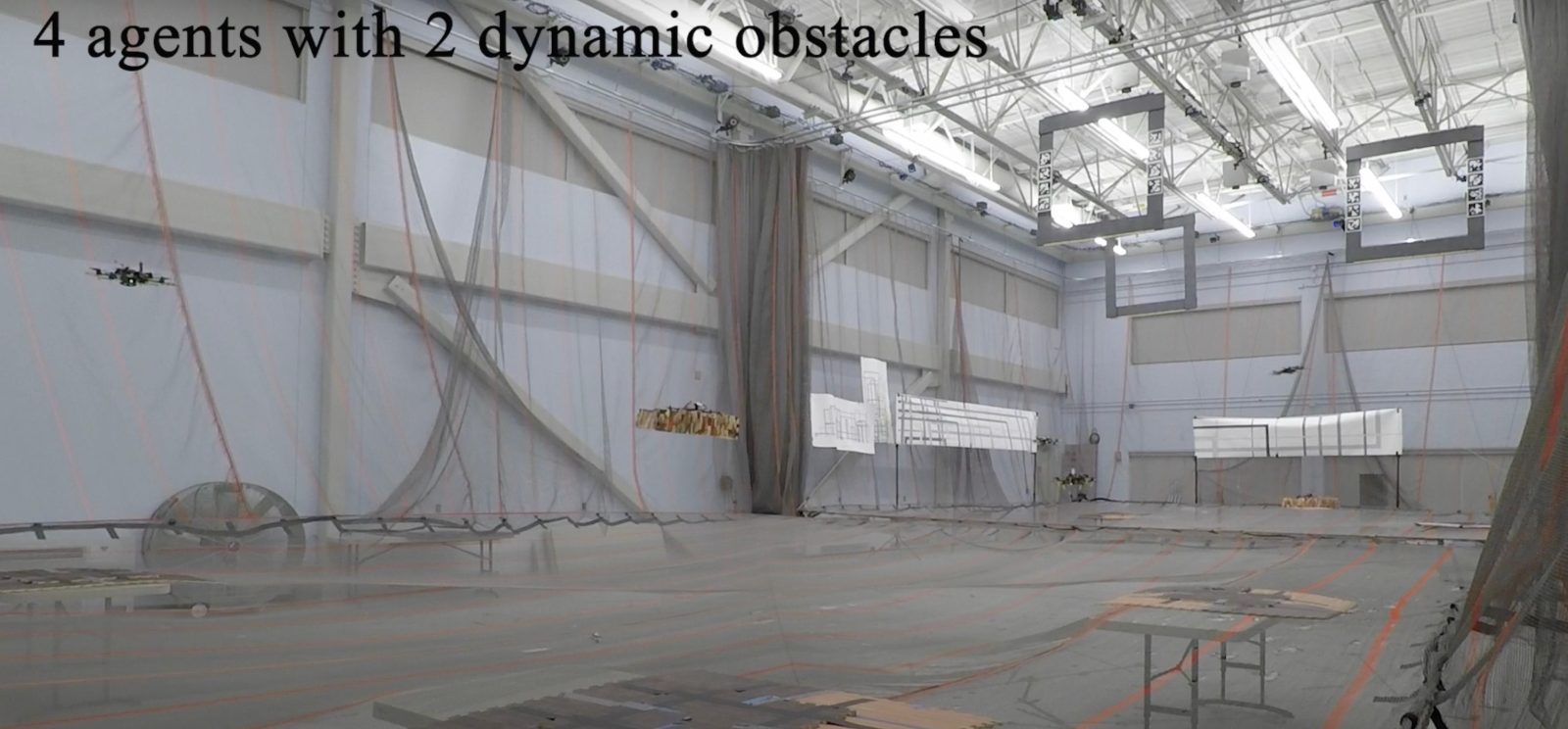
Researchers at the Massachusetts Institute of Technology (MIT) say they’ve created an automated system allowing drones to select safe flight trajectories with what trials indicated was a 100% collision-free success rate.
In a paper on their experiment, the MIT team describes how they updated the MADER system they created in 2020 that permits drones to communicate with one another, and choose flight paths that avoid collision. The hitch with that tech, the researchers said, was while it was flawless in simulations, in live trials with UAVs it ran into trouble when information transfers between craft slowed, and vehicles chose routes that wound up intersecting others.
To solve that problem, members of the MIT unit factored in short delays in drones selecting their next trajectories to ensure they wouldn’t wind up running into others in the area. The resulting Robust MADER system delivered what wound up being 100% safety to the system during recent trials.
An article on the project by MIT News described the original version as “a multiagent trajectory-planner (enabling) a group of drones to formulate optimal, collision-free trajectories.” It works by each craft sharing its flight paths with the rest so all UAVs are aware of where the others are heading, and can choose their own routes to avoid collisions.
While it killed in simulations, MADER had problems in live tests, said aeronautics and astronautics graduate student and MIT team member Kota Kondo. Those arose from the communications delays between craft, which resulted in some UAVs selecting paths without knowing those would intersect late-in-arriving trajectories.
Read: Researchers create tiny drones with greater agility and resiliency than large craft
To work around that, the group created an algorithm that worked a period of delay into the choice process. In that way, drones in the MIT trials would select what they recognized were non-conflicting flight paths, then pause. If information arrived during the wait indicating possible collision risk, that initial itinerary was abandoned for a safe option.
The result was a 100% collision-free outcome in the MIT trials, which also tested drone flights using similar but different systems that all produced some incidence of crashes.
In exchange for somewhat longer mission completion, Kondo says, Robust MADER delivered total flight security.
“If you want to fly safer, you have to be careful, so it is reasonable that if you don’t want to collide with an obstacle, it will take you more time to get to your destination,” Kondo told MIT News. “If you collide with something, no matter how fast you go, it doesn’t really matter because you won’t reach your destination.”
FTC: We use income earning auto affiliate links. More.



Comments